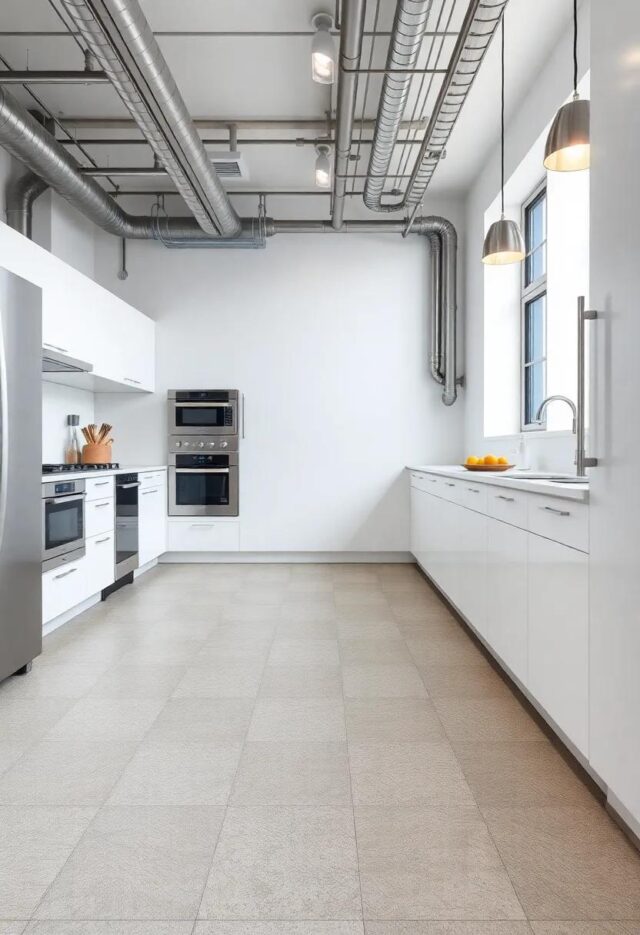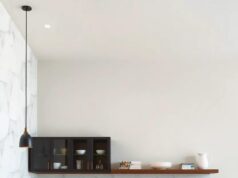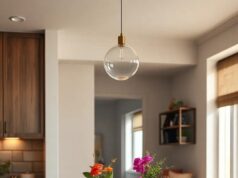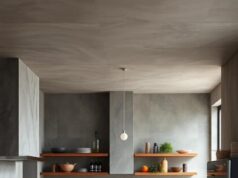In the bustling heart of any commercial kitchen, where the rhythm of culinary artistry meets the demands of high-volume production, one element often remains overlooked—flooring.Yet, the choice of flooring can considerably impact not only the environment but also the overall efficiency and safety of operations. Choosing the right industrial kitchen flooring is a multifaceted decision that encompasses durability, safety, and style. From slippery surfaces that pose a hazard to the well-being of staff, to materials that can withstand the rigors of heavy equipment and constant foot traffic, the stakes are high. Simultaneously occurring, as kitchens evolve into the face of brands and culinary experiences, the aesthetic appeal cannot be ignored. This article invites you to explore the essential considerations for selecting flooring that strikes the perfect balance between functionality and visual appeal, ensuring that your kitchen is both a safe haven for creativity and a robust foundation for success.Let’s dive into the various options available and illuminate the path to a smarter, safer, and stylish kitchen floor.
Choosing the Perfect Material for Industrial kitchen Flooring
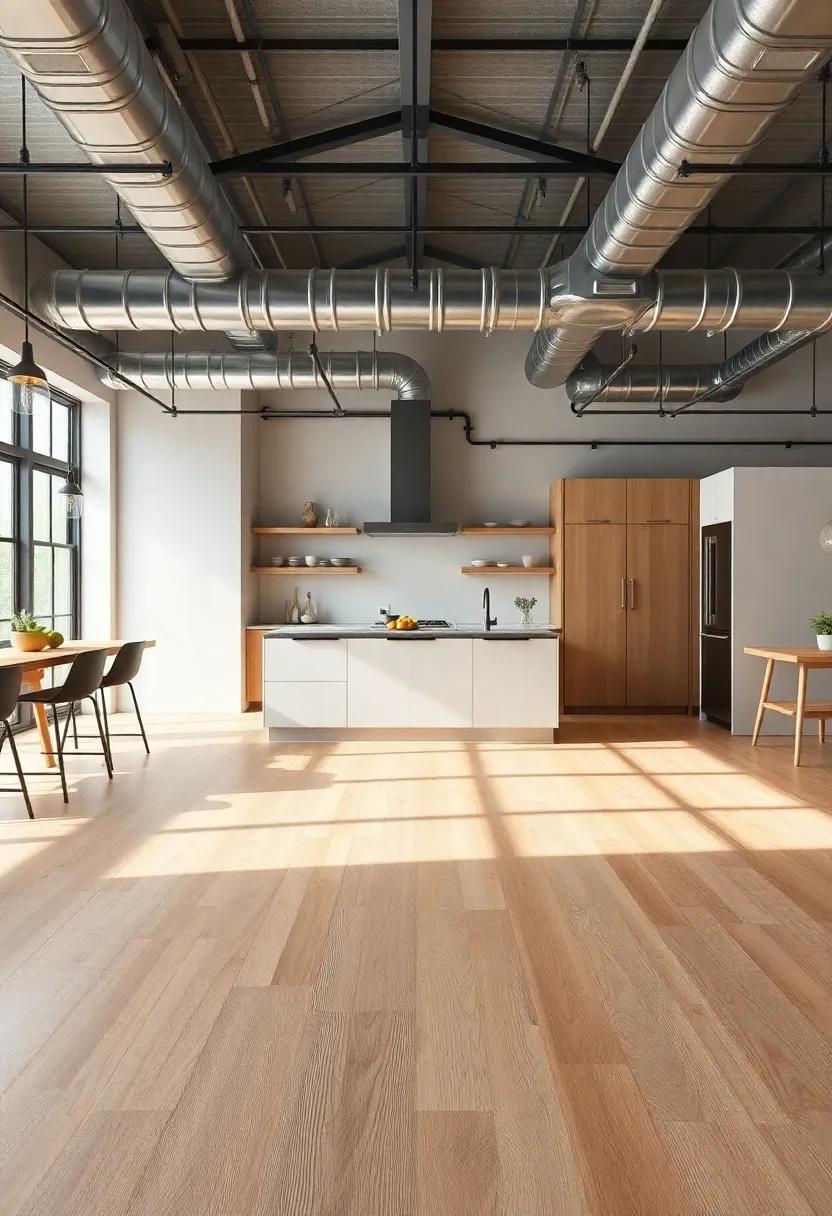
When selecting the right flooring for an industrial kitchen,durability is paramount. High-traffic areas require materials that withstand constant wear and tear while still maintaining their structural integrity. Vinyl, rubber, and epoxy coatings often emerge as top contenders, owing to their ability to resist scratches, spills, and heavy impacts. Moreover, the right material will also be condition-specific. Such as, if your kitchen regularly experiences extreme temperatures or chemical exposure, polyurethane flooring or similar resistant materials will ensure longevity and performance. Always assess the specific needs of your kitchen environment before making a final decision.
Another critical factor to consider is safety, which is particularly important in industrial kitchens where slip hazards can lead to serious accidents. Opting for textured or slip-resistant surfaces can significantly mitigate risk. Additionally,materials that are easier to clean and maintain contribute not only to safety but also to sanitation. A clean space fosters a healthier environment for food preparation. When evaluating options, keep in mind the following characteristics:
- Non-slip properties: essential for preventing falls
- Water resistance: Crucial for wet cleaning conditions
- Easy to clean: Reduces bacteria and contamination
| Material | Benefits | drawbacks |
|---|---|---|
| Vinyl | Cost-effective, easy maintenance | Can be punctured with sharp objects |
| Rubber | Excellent slip resistance | Can be more expensive |
| Epoxy | Highly durable, water-resistant | installation can be complex |
Evaluating Slip Resistance in High-Traffic Kitchen Environments
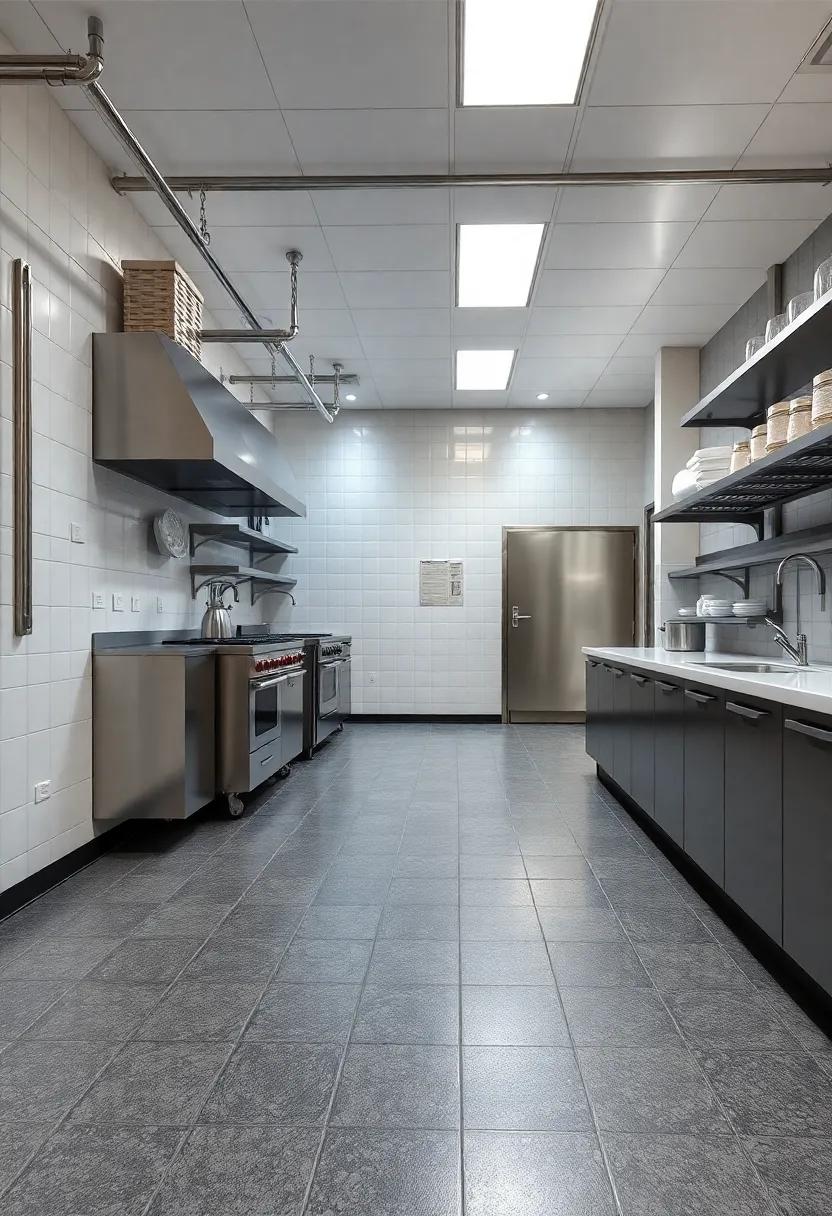
In high-traffic kitchen environments, ensuring optimal slip resistance is paramount to both safety and efficiency. With numerous spills, wet floors, and constant movement, choosing the right flooring material can significantly mitigate the risk of accidents. when evaluating slip resistance, consider the coefficient of friction (CoF), which measures the traction between the surface and footwear. Typically, a CoF of 0.6 or higher is recommended for commercial kitchens. additionally, examining the texture of the flooring is crucial—textured surfaces can enhance grip, while smooth finishes may pose a higher risk. Remember to prioritize ease of maintenance; flooring that requires less effort to clean will continue to provide reliable slip resistance over time.
As you select flooring for your industrial kitchen, pay attention to industry ratings and certifications related to slip resistance.Look for materials that comply with standards such as the ASTM standards and have been tested in real-world conditions. A table below summarizes popular flooring options and their respective slip resistance features:
| Flooring Type | Typical CoF | Texture | Maintenance Level |
|---|---|---|---|
| Vinyl Composite Tile (VCT) | 0.6 - 0.8 | Textured | Moderate |
| PVC Sheet flooring | 0.7 – 0.9 | Textured | Easy |
| Epoxy Coatings | 0.7 – 1.0 | Customizable | Low |
| Ceramic Tiles | 0.5 – 0.8 | Varied | Moderate |
Along with CoF ratings, consider environmental factors such as humidity and temperature fluctuations, which can influence slip resistance. Always consult with flooring specialists to ensure the selected material matches the specific conditions and operations of your kitchen.By prioritizing these aspects, you can create a safer, more efficient workspace that not only meets the demands of high traffic but also reflects your kitchen’s style and functionality.
Innovative Flooring Solutions for Food safety Compliance
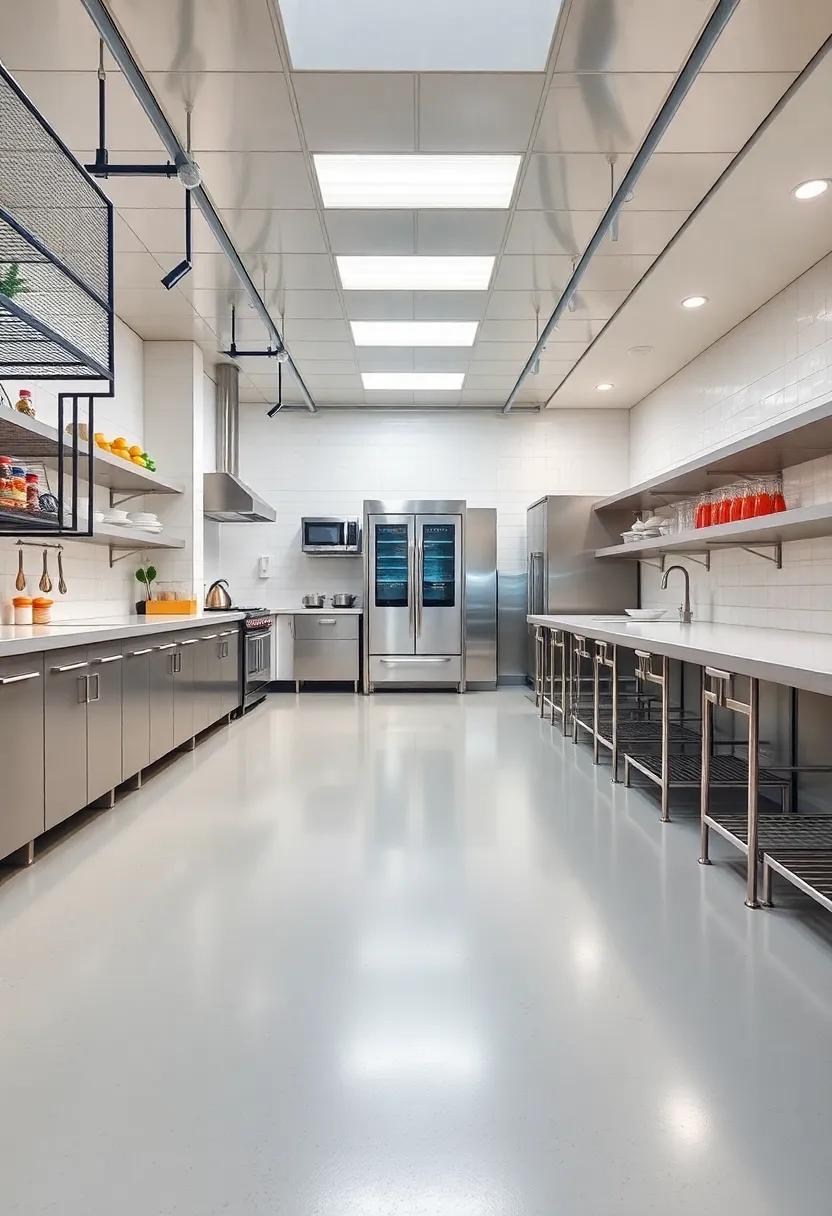
when selecting flooring for industrial kitchens, it’s crucial to prioritize materials that not only withstand heavy foot traffic but also enhance food safety compliance. Innovative flooring solutions now introduce features that assist in preventing bacterial growth and ensuring easy maintenance. Some top choices include:
- Anti-slip surfaces: Minimized risk of accidents in wet environments.
- Seamless installations: reducing areas where contaminants can accumulate.
- Biodegradable options: Environmentally amiable materials that promote sustainability.
Furthermore, selecting the right flooring can merge aesthetics with functionality. Contemporary offerings allow kitchens to maintain an appealing visual without compromising safety or durability. Consider elements such as:
- Color-coded zones: Marking out areas for different food preparations can enhance clarity and reduce cross-contamination.
- easy to clean finishes: Smooth, non-porous textures that withstand harsh cleaning regimes.
- Integrated drainage systems: A critical aspect for efficient water removal and sanitation.
| Flooring Type | Key Features | Best For |
|---|---|---|
| Vinyl | Waterproof, easy to clean | High-moisture areas |
| EPDM Rubber | Anti-slip, durable | High-traffic zones |
| Tiles | Variety of designs, easy to repair | Aesthetic appeal |
The Role of Color and Design in Kitchen Floor Selection
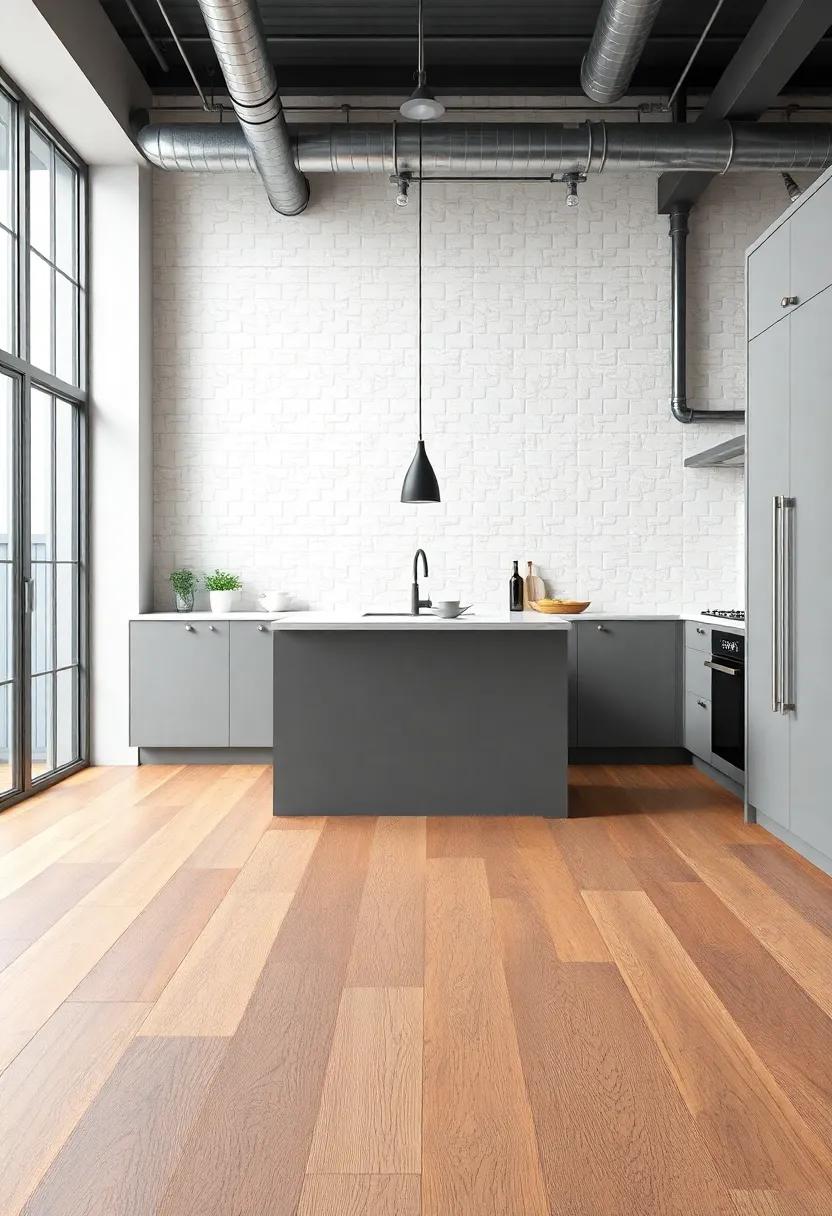
When selecting flooring for an industrial kitchen, the choices of color and design play a pivotal role in achieving an efficient and aesthetically pleasing environment. Neutral tones such as grays,whites,and blacks frequently enough create a backdrop that enhances the spaciousness of the area,promotes cleanliness,and minimizes the visibility of dirt and stains. In contrast, vibrant colors can be strategically employed to distinguish various zones, guiding staff to different functional areas like food preparation, cooking, and dishwashing. Consider also the psychological impact of color; as a notable example, warm tones may create an inviting atmosphere, while cooler shades can instill a sense of calm, essential in high-pressure kitchen settings.Additionally, the design of the flooring itself contributes to both functionality and style. Patterns can add visual interest while providing a practical aspect; such as, textured surfaces can enhance slip resistance, crucial for safety in busy kitchens.The layout of tiles or planks can be arranged in various styles, such as herringbone or diagonal, to create dynamic flow within the space. Below is a simple table illustrating the advantages of different flooring colors and designs in terms of functionality and aesthetic appeal:
| Color/Design | Functionality | Aesthetic Appeal |
|---|---|---|
| Neutral Tones | Mask stains, expand sense of space | Timeless, professional look |
| Vibrant Colors | Define zones, stimulate energy | Visually engaging and lively |
| Textured Surfaces | Increase safety by reducing slips | Add depth and interest |
Understanding Different Flooring Types: Pros and Cons
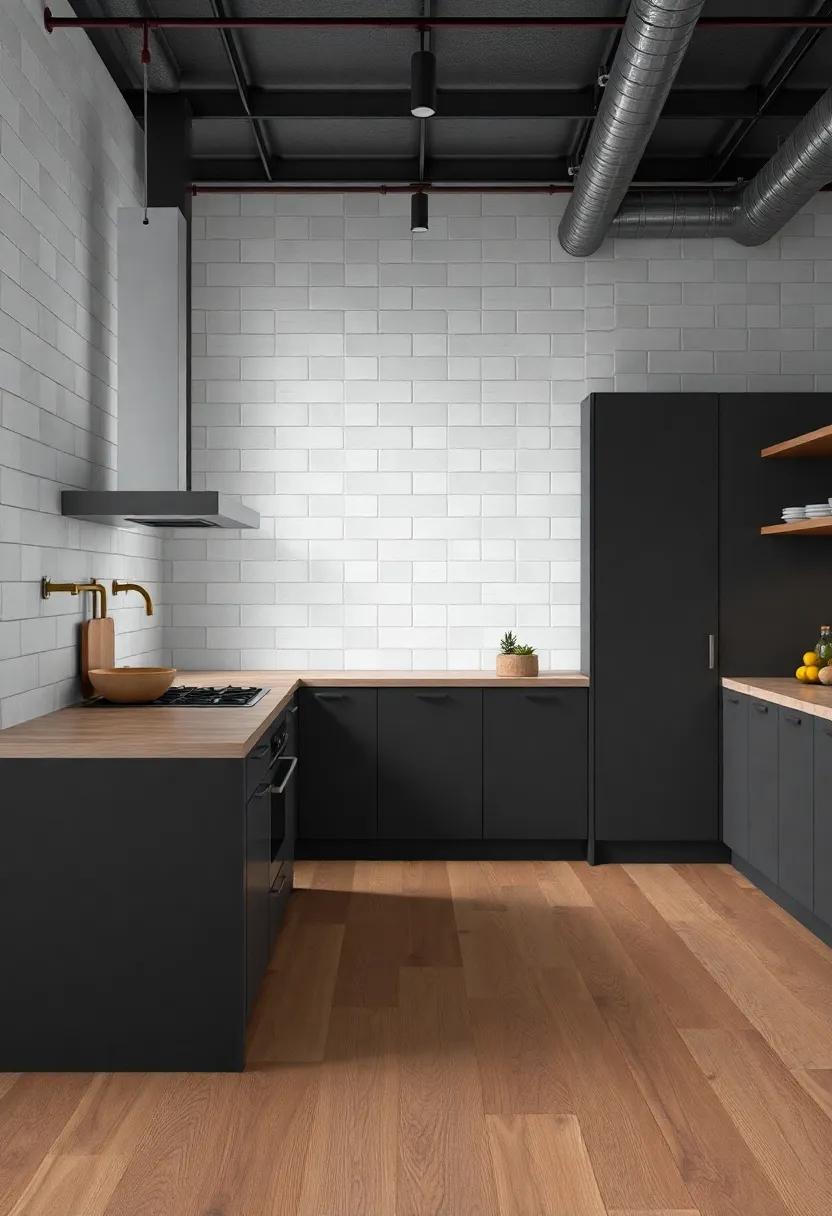
When selecting flooring for an industrial kitchen,understanding the diverse range of materials available is essential to making an informed choice. Vinyl flooring is a popular option due to its water resistance and ease of maintenance. It can withstand heavy foot traffic while offering a softer surface underfoot, reducing fatigue for staff. However, it may scratch more easily than tougher materials and can become discolored in direct sunlight. On the other hand, concrete flooring provides unparalleled durability and is resistant to spills and impacts. Its hard veneer, though, can increase the likelihood of slips if not properly treated or sealed.
Tile flooring is another forward contender, known for its aesthetics and ease of cleaning, but can be cold and hard, leading to discomfort for workers who spend long hours standing. Rubber flooring is gaining traction for its superior slip resistance and cushioned surface, enhancing both safety and comfort. Yet, it might not be as visually appealing as other options. Understanding these pros and cons will ensure a flooring selection that aligns with both functional needs and stylistic preferences.
Impact of Flooring on Kitchen Workflow Efficiency
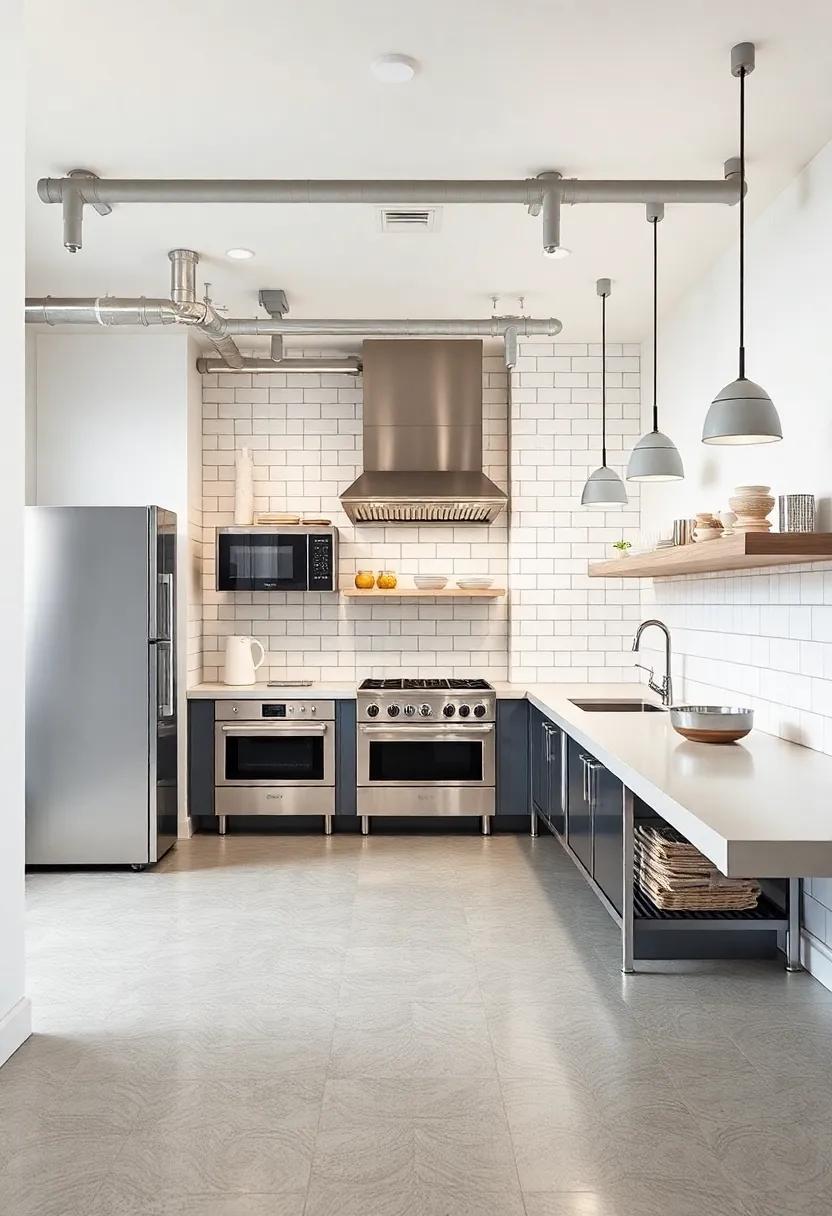
In an industrial kitchen, the choice of flooring can significantly influence the overall workflow and productivity of staff. With the constant movement of chefs, servers, and kitchen equipment, it’s crucial to select a flooring material that enhances efficiency rather than hinders it. Durable and slip-resistant surfaces can definitely help minimize accidents while allowing for smooth navigation throughout the kitchen. Properly designed flooring can also facilitate quick cleaning and maintenance, helping to keep the kitchen environment safe and hygienic, which is an essential factor in food preparation.
Moreover, when flooring is thoughtfully integrated into the kitchen layout, it can definitely help delineate various work zones, thereby optimizing space utilization. As a notable example,color-coded flooring can offer visual cues that direct staff to different sections,making tasks like prep work,cooking,and plating more streamlined. Below is a simple table outlining essential flooring attributes that can benefit kitchen workflow:
| Flooring Type | durability | Slip Resistance | Maintenance |
|---|---|---|---|
| Vinyl | High | Medium | Easy |
| Tile | Very High | Low | Moderate |
| Concrete | High | High | Low |
| Rubber | Medium | Very High | Moderate |
Sustainable Flooring Options for Eco-Friendly Kitchens
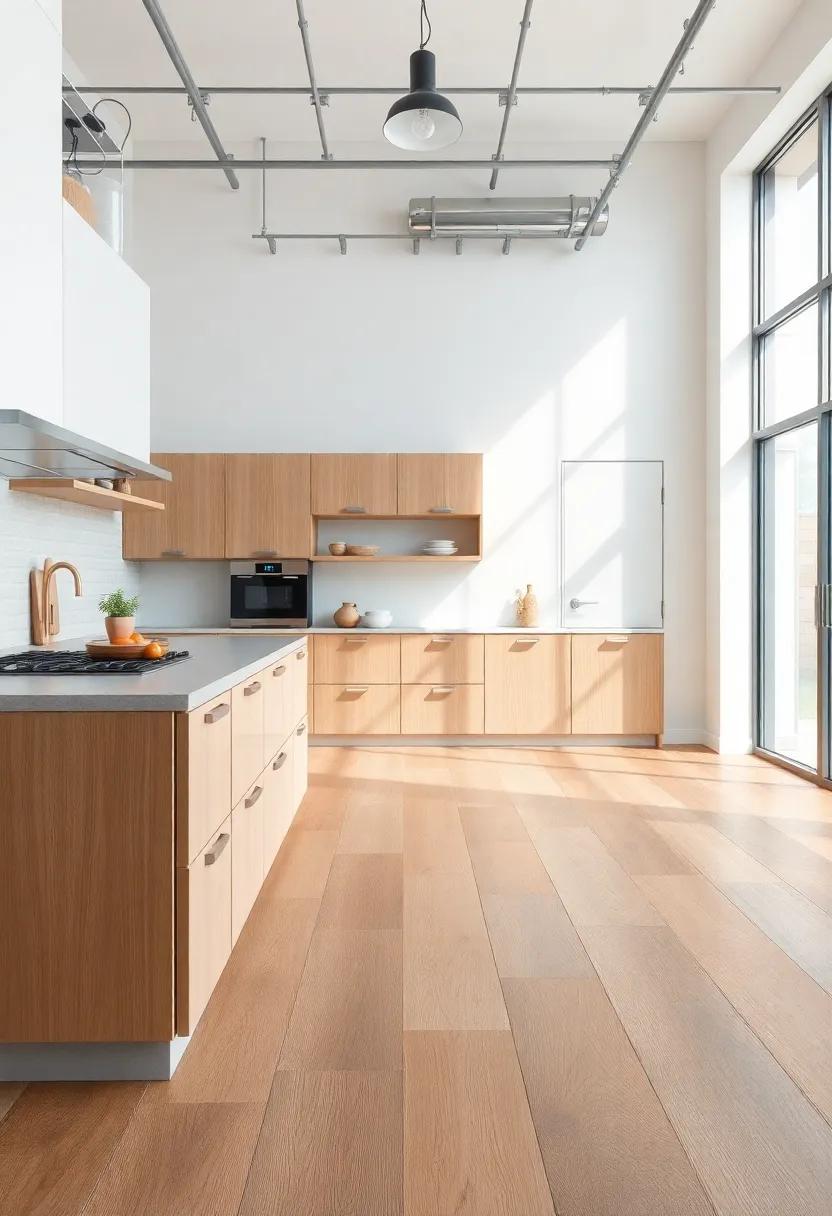
When designing an eco-friendly kitchen, the choice of flooring plays a crucial role in balancing aesthetics with sustainability.Bamboo is an excellent option, as it is a rapidly renewable resource that offers durability and resilience. With its rich grain and warm tones, bamboo flooring adds a touch of natural beauty to the kitchen while being resistant to moisture and wear.Another popular choice is cork, harvested from the bark of cork oak trees without harming the tree itself. This unique flooring material provides cushioning underfoot, thermal insulation, and sound absorption, making it ideal for busy kitchen environments.
For those seeking a more traditional option, reclaimed hardwood not only offers character with unique grain patterns but also repurposes wood, reducing the demand for new timber. Additionally, linoleum, made from natural materials like linseed oil and jute, boasts impressive eco-credentials and is highly customizable in terms of color and design. It’s important to ensure any flooring material used is supported by eco-friendly production processes. here’s a quick comparison of some sustainable flooring options:
| Material | Renewability | Durability | Maintenance |
|---|---|---|---|
| Bamboo | Highly Renewable | Excellent | Low |
| cork | renewable | Good | Medium |
| Reclaimed Hardwood | Repurposed | Very Good | Medium |
| Linoleum | Natural Materials | Good | Low |
the Importance of Thermal Stability in Kitchen Flooring
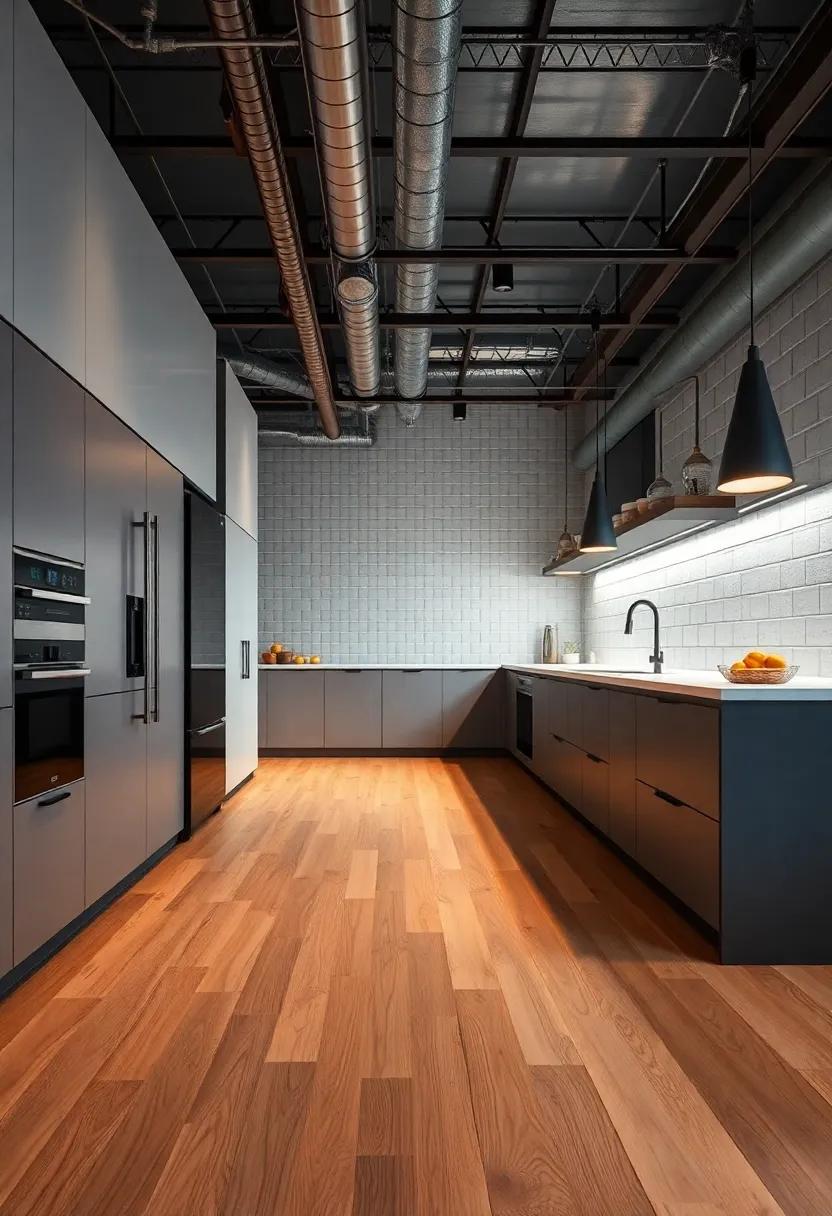
In an industrial kitchen environment, where high temperatures and rapid changes in heat are a daily occurrence, thermal stability in flooring becomes crucial for both safety and performance.Flooring materials must be able to withstand extreme conditions without warping, cracking, or losing their integrity. Highly thermal-stable materials ensure that the flooring remains functional and safe, providing a level surface that prevents accidents caused by flooring deformation. Moreover, proper thermal resistance helps to maintain a agreeable work environment for kitchen staff, minimizing the heat retained by the floors during peak cooking times.
When selecting the right flooring, consider materials that are not only durable but also exhibit exceptional thermal stability. Here are some options that stand out:
- Vinyl Flooring: Offers resilience against heat and easy cleaning.
- Epoxy Coatings: Provides a seamless surface that can withstand high temperatures.
- Ceramic Tiles: Naturally heat-resistant and durable,ideal for high-traffic areas.
Investing in flooring that can handle thermal fluctuations is essential for the longevity of your kitchen space. The right choice can enhance safety and efficiency while adding a touch of style to your culinary environment.
Choosing Between Tiles, Vinyl, and Epoxy Flooring
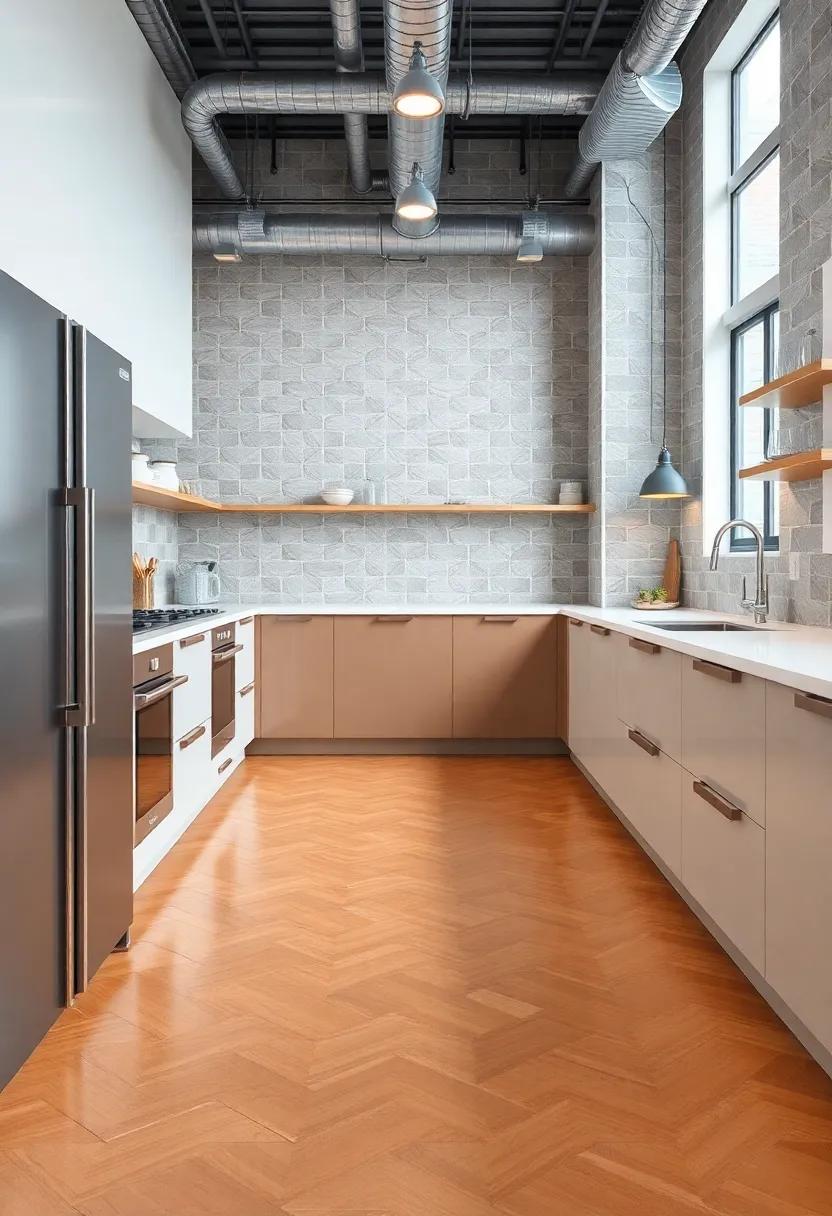
When it comes to selecting the right flooring for an industrial kitchen, the choice frequently enough narrows down to tiles, vinyl, or epoxy. Each option presents unique advantages that cater to various needs in a bustling kitchen environment. Tiles are typically favored for their durability and aesthetic value, making them suitable for both functionality and style. They are non-porous, which helps to resist stains and facilitate easy cleaning. However,their weight and installation requirements can complicate renovations. On the other hand, vinyl flooring is celebrated for its versatility and ease of installation.Available in numerous designs that mimic wood or stone,it offers a softened underfoot that can lessen fatigue during long hours of standing. Its waterproof nature is also a meaningful plus, providing a reliable solution for high-moisture settings.
Epoxy flooring stands out for its exceptional durability and seamless design, making it ideal for high-traffic areas in kitchens. Its robust surface can withstand heavy impacts and is resistant to chemicals and spills, ensuring longevity even under strenuous conditions. Perhaps the most compelling advantage of epoxy is its safety features; it often has anti-slip properties, which are crucial in a kitchen setting where moisture is prevalent. To help you compare these options visually, consider the concise table below:
| Flooring Type | Durability | Maintenance | Cost |
|---|---|---|---|
| Tiles | High | moderate | $$$ |
| Vinyl | Moderate | Low | $$ |
| Epoxy | very High | Low | $$$$ |
Aesthetic Trends in Industrial Kitchen Flooring Design
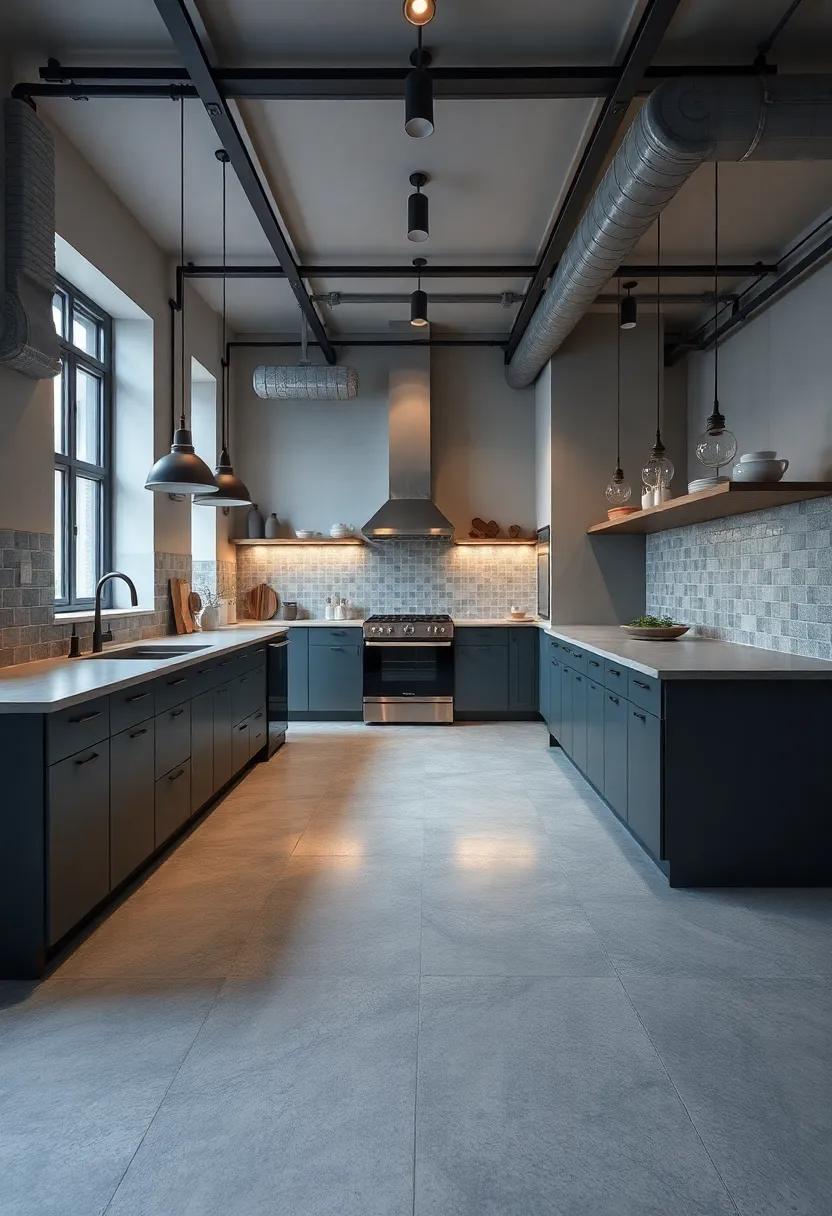
The aesthetic appeal of industrial kitchen flooring has evolved significantly, embracing a blend of raw functionality and modern design. Many establishments are opting for materials that not only withstand heavy foot traffic but also convey a strong visual identity. Concrete, as an example, is popular for its versatility. it can be polished, stained, or stamped to achieve various looks—from sleek and contemporary to rustic and textured.Further enhancing the industrial vibe, epoxy coatings are frequently employed, offering a seamless finish that is both visually striking and highly durable. The glossy surface reflects light,creating an inviting atmosphere while being easy to clean.
Beyond concrete and epoxy, vinyl and rubber flooring are making headway as aesthetically pleasing and practical choices. Available in a plethora of styles and colors, these materials allow for customization while ensuring safety and resilience. For those looking to incorporate warmth into the industrial design, wood-look tiles can provide the desired rustic charm without compromising on durability. Here’s a quick comparison of popular industrial kitchen flooring options to consider:
| Material | Durability | Style | Maintenance |
|---|---|---|---|
| Concrete | High | Versatile | Low |
| Epoxy | Very High | Minimalist | Easy |
| Vinyl | Medium | Customizable | Low |
| Rubber | High | Contemporary | Low |
| Wood-look Tiles | Medium | Warm | Medium |
Exploring Acoustic Benefits of Various Kitchen Floor Materials
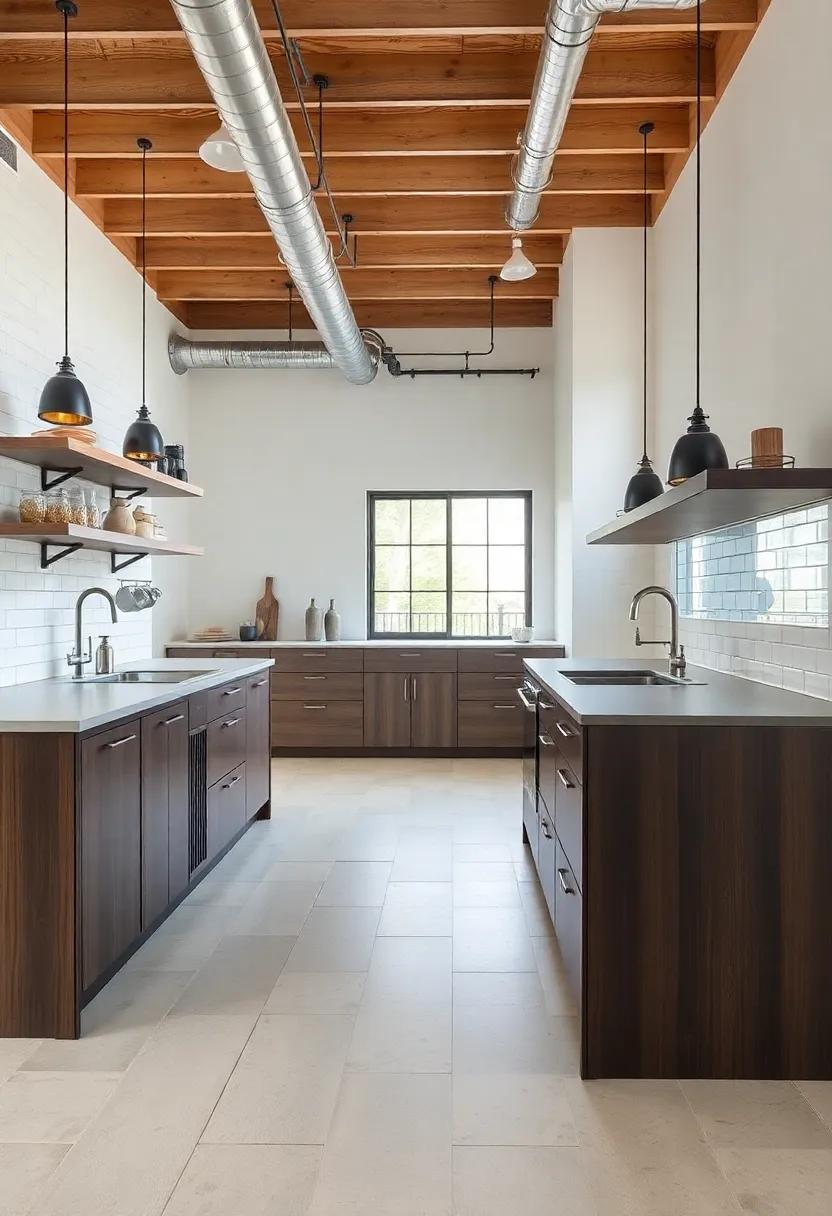
When considering the acoustic environment of an industrial kitchen, the choice of flooring can have a significant impact on noise absorption and sound diffusion. Several materials stand out for their unique acoustic properties. for instance, rubber flooring is known for its sound-dampening qualities, making it ideal for busy kitchens where clatter and chatter are prevalent. Another noteworthy option is cork, which not only provides comfort underfoot but also effectively absorbs sound, creating a quieter atmosphere. On the other hand,vinyl can offer moderate sound absorption while being extremely resilient and easy to clean,striking a balance between practicality and acoustic benefit.
Conversely, materials like ceramic tiles tend to amplify sound due to their hard surfaces, contributing to a noisier kitchen environment. To help you visualize how various kitchen flooring options compare in terms of acoustic qualities, the following table outlines their key characteristics:
| Material | Sound Absorption | Comfort Level | durability |
|---|---|---|---|
| Rubber | High | High | Very High |
| Cork | Moderate | High | Moderate |
| vinyl | Moderate | Moderate | High |
| Ceramic Tile | Low | Low | Very high |
Assessing Cost-Effectiveness for Your Kitchen Renovation
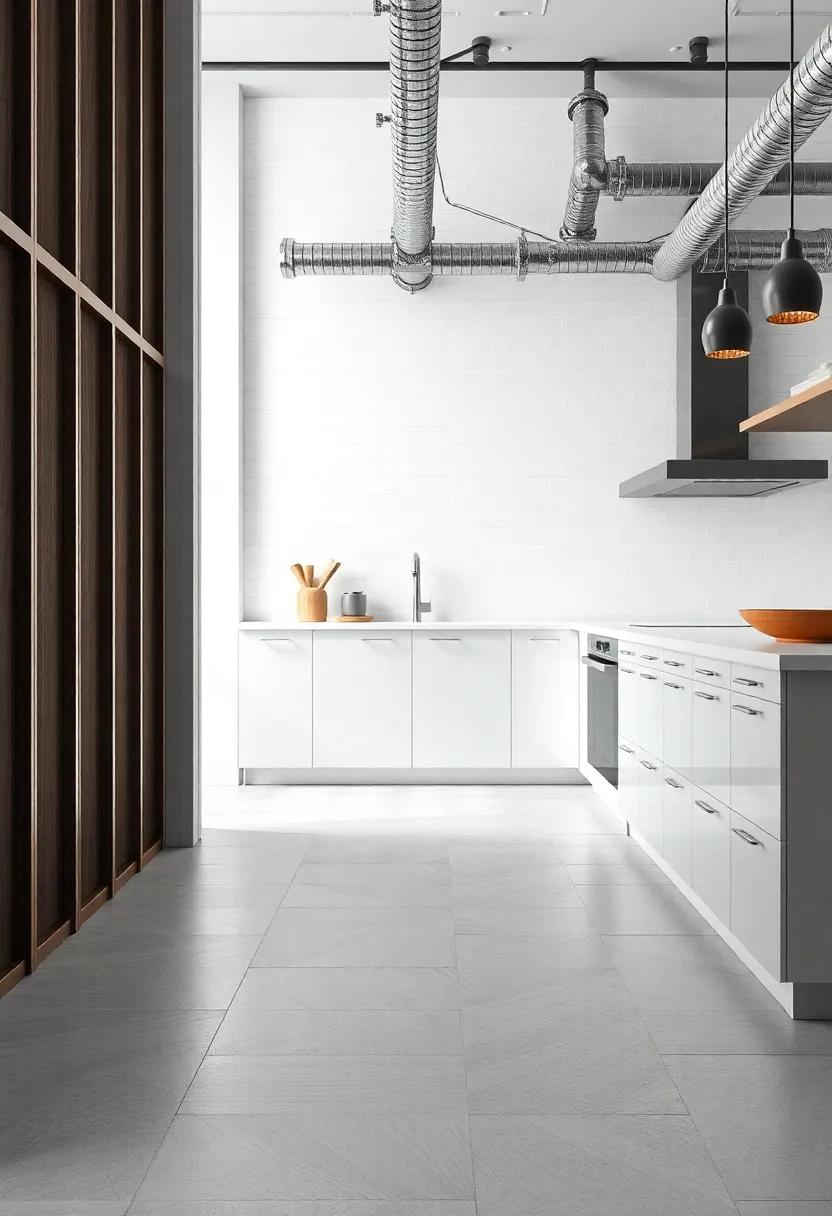
Before committing to a kitchen renovation project, it’s vital to evaluate both the immediate and long-term costs associated with the upgrade. This includes not just the initial expenses, such as materials and labour, but also potential savings and efficiencies that can be gained from a well-planned space. To help with this assessment,consider the following factors:
- Material Longevity: Investing in durable flooring materials can reduce the frequency of replacement,leading to cost savings over time.
- Maintenance requirements: Some flooring options require more upkeep than others; choosing low-maintenance surfaces can save money in regular cleaning and repairs.
- Safety Features: Slip-resistant flooring might carry a higher upfront cost but can prevent accidents, possibly lowering insurance premiums and liability risks.
To make an informed decision,it can be helpful to weigh up the options based on their cost-effectiveness. The table below compares different flooring types in terms of their upfront costs, lifespan, and maintenance costs:
| Flooring Type | Upfront Cost | Lifespan (Years) | Maintenance Cost (Yearly) |
|---|---|---|---|
| Vinyl | Low | 10-20 | Low |
| Ceramic tile | Medium | 15-30 | Medium |
| Epoxy Coating | High | 20-30 | Low |
| Concrete | Medium | 20+ | Very Low |
By considering these elements, you can better gauge which flooring will not only complement your kitchen’s aesthetic but also provide the best return on investment in the long run. Making an informed choice can lead to a space that meets safety, durability, and styling needs without breaking the bank.
The Influence of Flooring on Kitchen Hygiene and Cleanliness
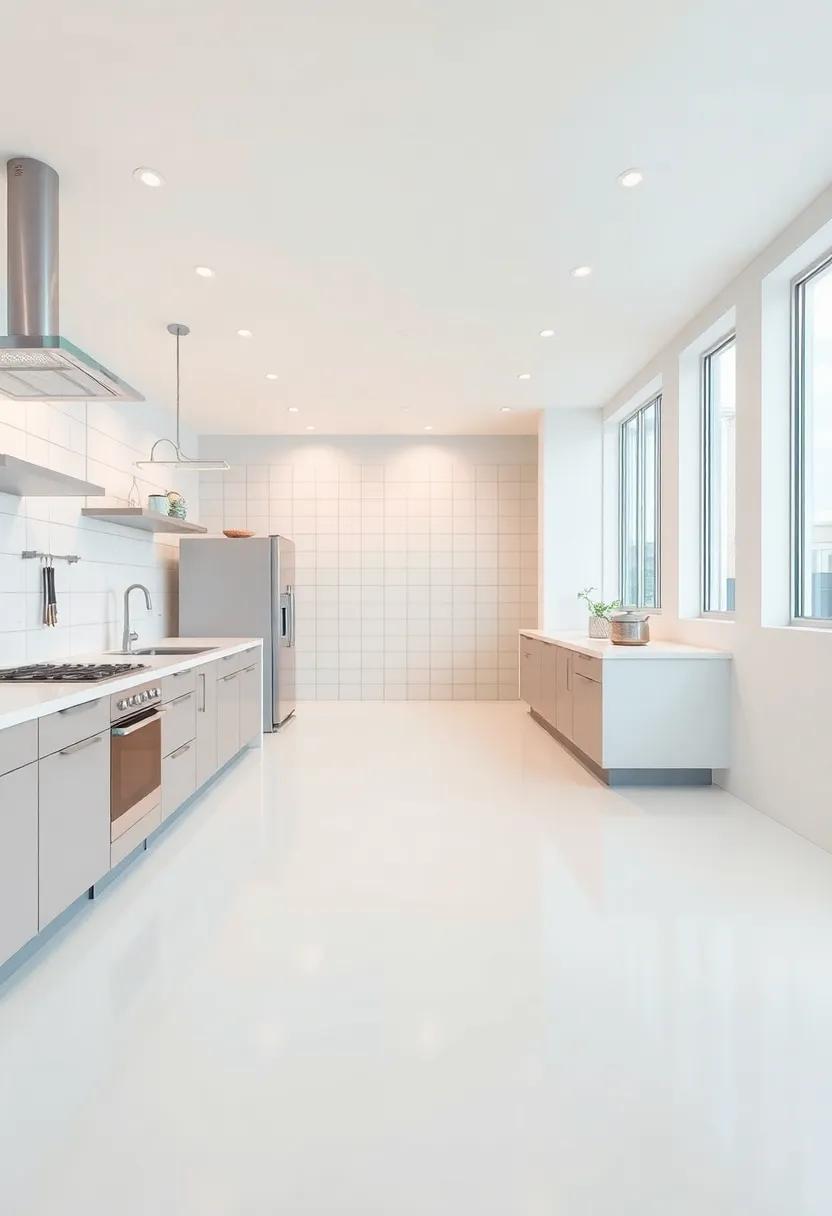
The choice of flooring in a kitchen holds a significant sway over its overall hygiene and cleanliness. Surfaces that are smooth and non-porous, like vinyl or ceramic tiles, can dramatically reduce the risk of dirt and bacteria accumulation. These materials are often easier to clean and sanitize compared to traditional options like wood, which can harbor moisture and germs. The right flooring can also limit spills and stains, providing a seamless surface that minimizes the places where food particles can hide.
Moreover, selecting flooring with appropriate slip resistance contributes to safety while enhancing sanitation. A few flooring types exemplify this balance well:
- Epoxy Flooring: Highly durable and easy to maintain.
- Rubber Flooring: Provides excellent slip resistance and sound absorption.
- Ceramic Tiles: Available in various styles and easy to clean.
This careful selection not only elevates the aesthetic appeal of the kitchen but also aids in maintaining a hygienic environment, essential for health-conscious kitchens.
Seamless Flooring Solutions for a Modern Industrial Kitchen
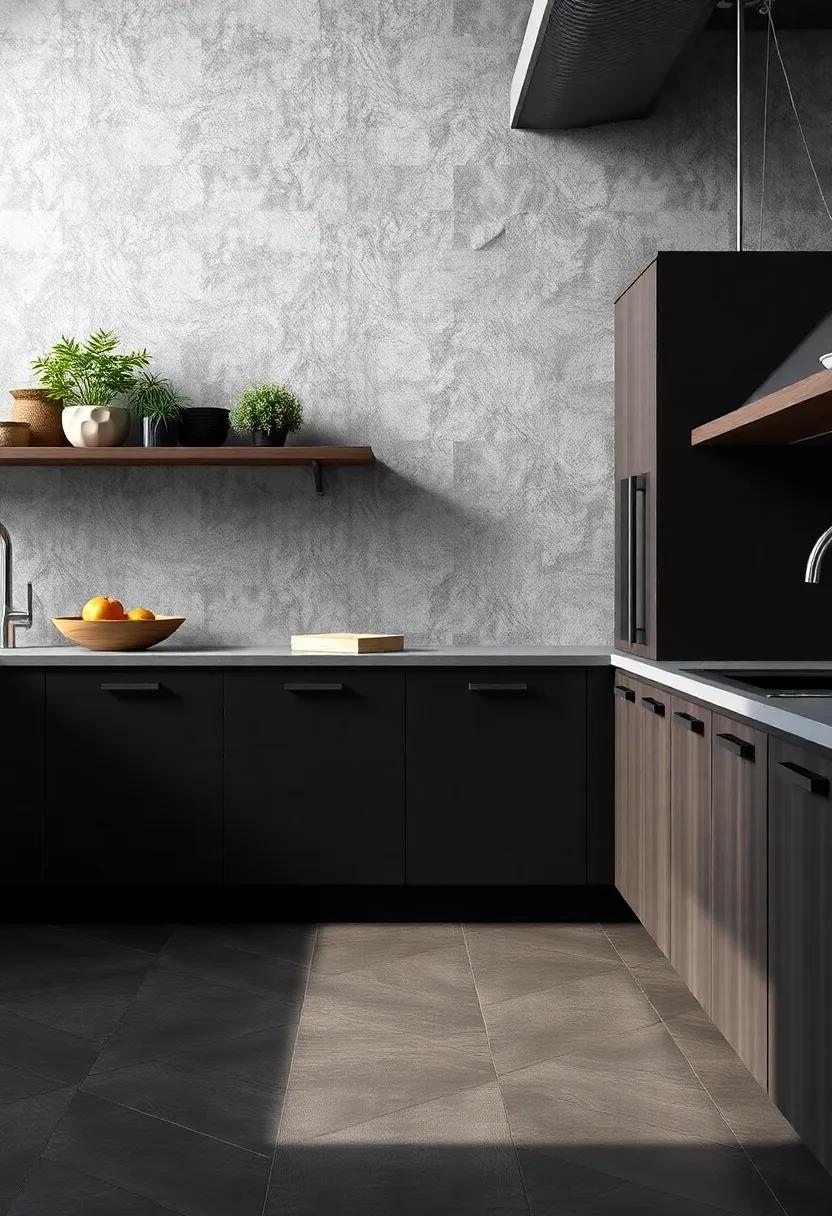
When it comes to industrial kitchens, the choice of flooring is paramount to ensure a harmonious blend of functionality and aesthetic appeal. Seamless flooring solutions stand out as an ideal option for modern settings,providing a clean,uncluttered look that enhances the overall design. These flooring systems offer a continuous surface, eliminating joints and seams, which not only contributes to the sleek appearance but also aids in maintaining hygiene. Epoxy, polyurethane, and resinous materials are frequently enough favored for their durability and resistance to stains, chemicals, and heavy foot traffic, making them perfect for the demands of any bustling culinary environment.
Additionally, seamless flooring plays a significant role in promoting safety in industrial kitchens. The non-slip surface of these materials helps reduce the risk of accidents caused by spills and food debris, protecting both staff and patrons alike. Furthermore, the easy-to-clean nature of seamless flooring minimizes the potential for bacteria and grime accumulation, ensuring compliance with health regulations. To provide a range of design options, manufacturers offer various colors and textures, allowing kitchens to harmonize their flooring with the overall decor. When selecting the right flooring, consider the following:
- Durability: Resistant to wear and tear from heavy equipment.
- Safety: Non-slip and easy to maintain.
- Style: Variety of colors and finishes to match your kitchen design.
evaluating the Longevity of Flooring Materials in Kitchen Use
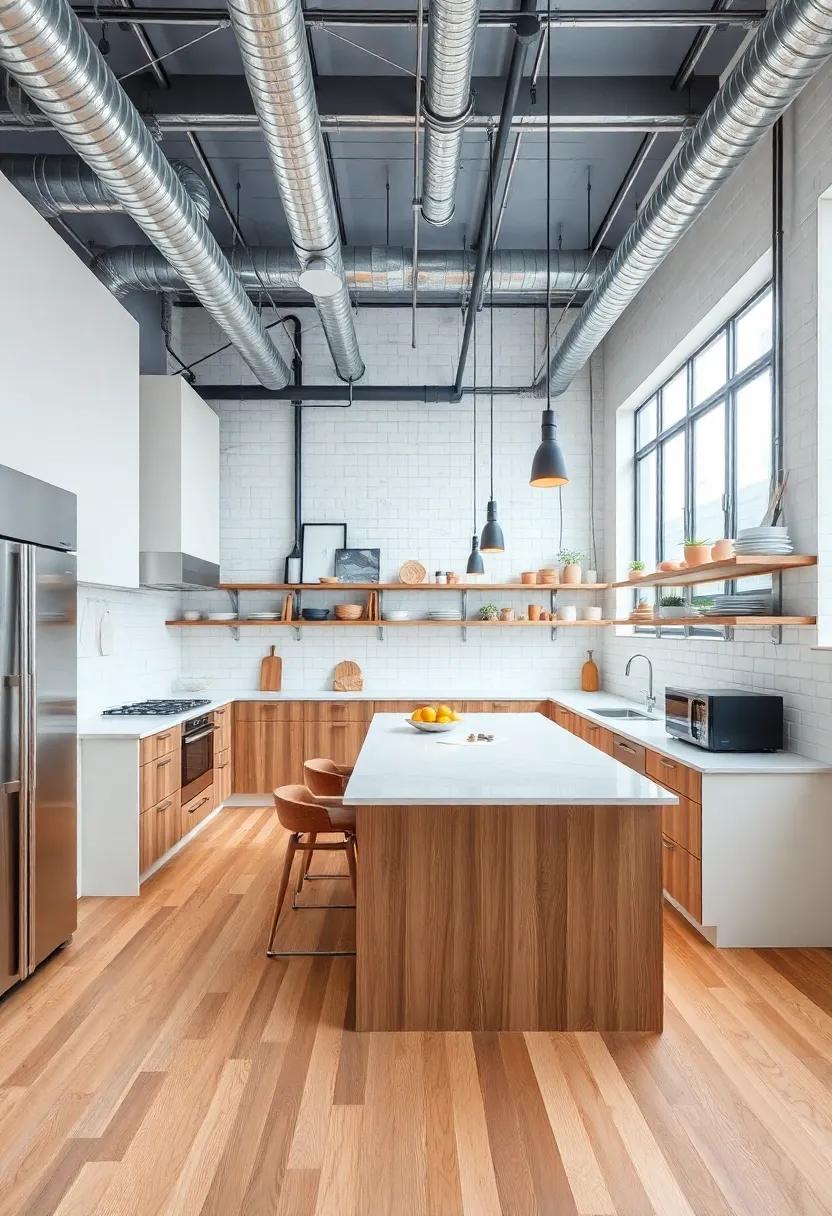
When it comes to flooring materials in industrial kitchens, longevity is paramount. The kitchen environment is characterized by high foot traffic, constant exposure to moisture, and frequent heavy impacts from equipment and utensils. For these reasons,selecting durable flooring that stands the test of time is essential. Some of the best-performing materials include:
- Vinyl: Highly resistant to stains and moisture,making it easy to clean and maintain.
- Concrete: Known for its exceptional durability, especially when sealed properly to resist staining.
- Tiles: ceramic or porcelain options provide a tough surface that can withstand heavy wear.
- Rubber: Offers excellent resilience, slip resistance, and comfort underfoot, ideal for long working hours.
it’s vital to consider not only the material’s lifespan but also how it reacts under the stresses of a bustling kitchen. Factors such as heat resistance, spill recovery, and ease of repair should also guide your decision. Below is a useful comparison of various kitchen flooring options based on longevity and safety attributes:
| Material | Expected Lifespan | Moisture Resistance | Slip Resistance |
|---|---|---|---|
| Vinyl | 10-20 years | Excellent | Medium |
| Concrete | 20+ years | Good | Low |
| Ceramic Tile | 20+ years | Excellent | High |
| Rubber | 15-25 years | Good | Excellent |
Choosing Flooring that Supports kitchen Technology Advancements
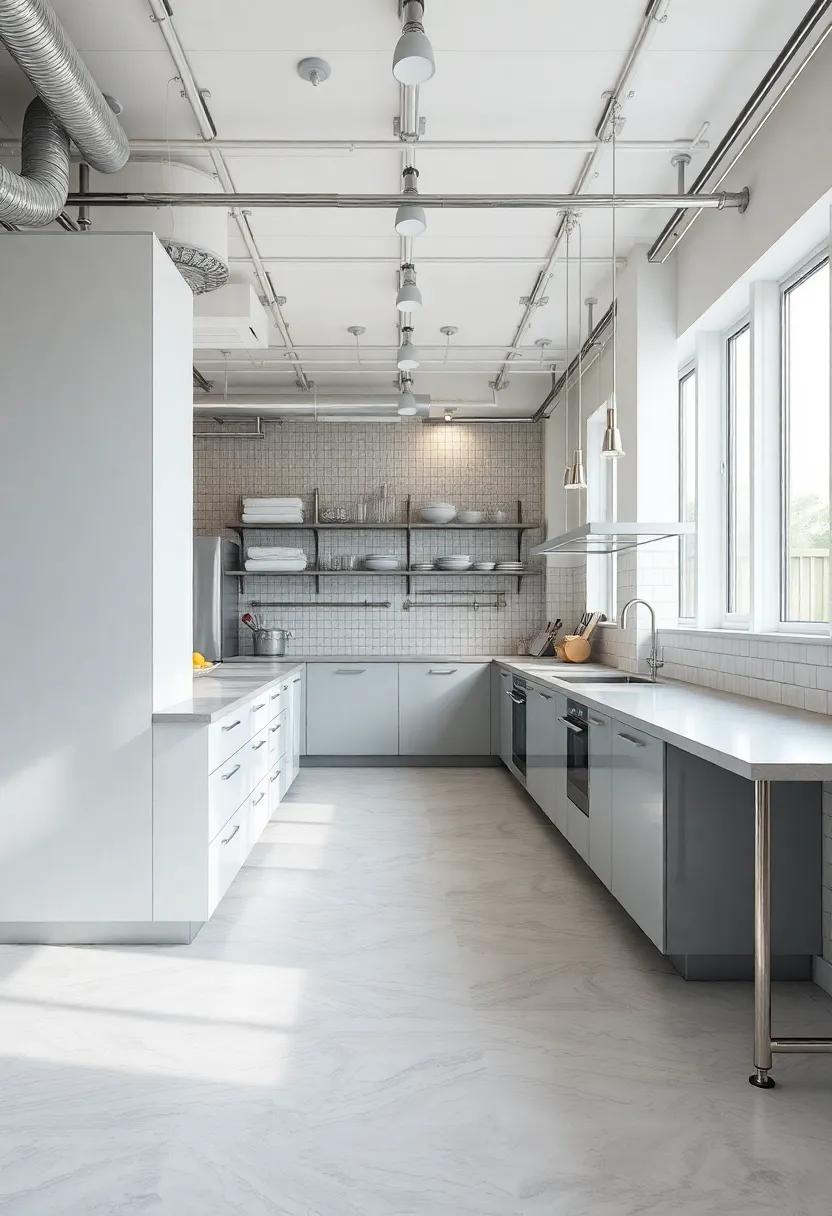
As industrial kitchens evolve to embrace cutting-edge technology, the flooring chosen must harmonize with these advancements while ensuring optimal performance and safety. flooring options that incorporate integrated technology, such as anti-microbial surfaces and smart flooring systems, are becoming increasingly prevalent. These innovations not only enhance the cleanliness and safety of kitchen environments but also contribute to overall efficiency. When selecting your flooring, consider options that can accommodate features like:
- Heated floors for improved comfort during long hours of standing.
- Electric floor sensors that can alert staff to spills or hazards.
- Smart material technology that adapts based on temperature and humidity.
Moreover, it’s crucial to evaluate how your flooring choice contributes to the management and maintenance of kitchen technology. For instance, options like rubber, epoxy, and vinyl not only exhibit remarkable resilience but also complement the installation of kitchen gadgets and appliances without compromising integrity. You may consider the following table for a quick comparison:
| Flooring Type | Durability | Maintenance | Technology Compatibility |
|---|---|---|---|
| Rubber | High | Easy to clean | Excellent |
| Epoxy | Very High | Minimal | good |
| Vinyl | Moderate | Simple | Fair |
This thoughtful integration of flooring and kitchen technology will not only bolster the operational capacities of your culinary space but also elevate the aesthetic appeal, ensuring your industrial kitchen remains at the forefront of contemporary advancements.
Navigating the Installation Process for Industrial Kitchen Flooring
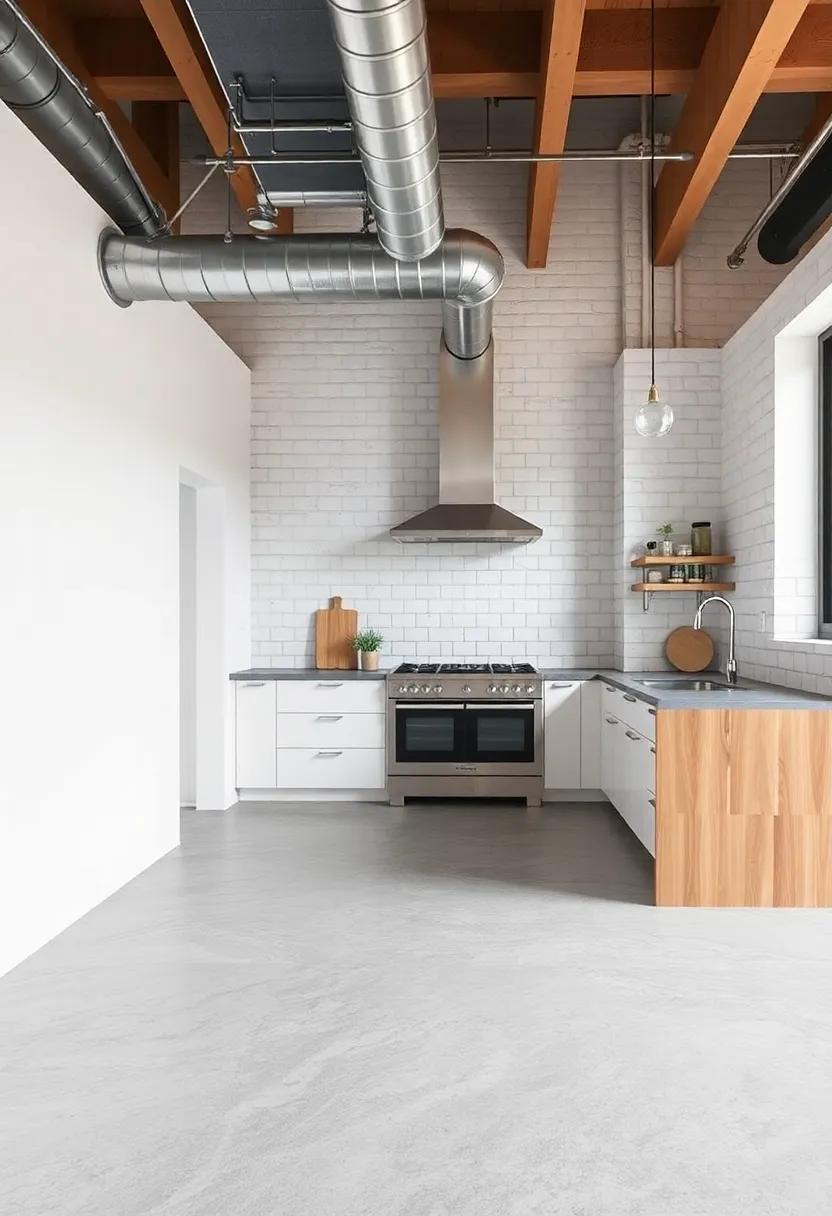
When it comes to installing industrial kitchen flooring, careful planning is essential to ensure a triumphant outcome. Selecting the right materials should be based not only on aesthetic preferences but also on the specific demands of a busy kitchen environment. Begin by assessing the subfloor condition and ensure it meets the requirements for the flooring type you’ve chosen. Proper preparation of the surface is crucial, as any imperfections can lead to future problems such as warping or cracking. Consider the following key steps:
- Assess subfloor integrity: Look for moisture problems or structural damage.
- Choose appropriate underlayment: This enhances insulation and sound control.
- Ensure compliance with safety standards: Fire resistance and slip ratings are paramount.
During the installation phase, timing and execution can drastically impact the finished product.It’s advisable to work with experienced professionals who specialize in commercial kitchen environments to navigate any nuances in installation techniques. Pay attention to the gaps and seams; poor alignment can lead to hygiene issues or unsafe conditions. Here’s a simple breakdown of the installation considerations:
| Consideration | Description |
|---|---|
| Material Compatibility | Ensure chosen materials are compatible with kitchen appliances and equipment. |
| Curing Time | Respect the curing time for adhesives and sealers before heavy use. |
| Future Maintenance | Plan for easy cleaning and maintenance for longevity. |
Key Considerations for Outdoor and Indoor Kitchen Flooring Choices
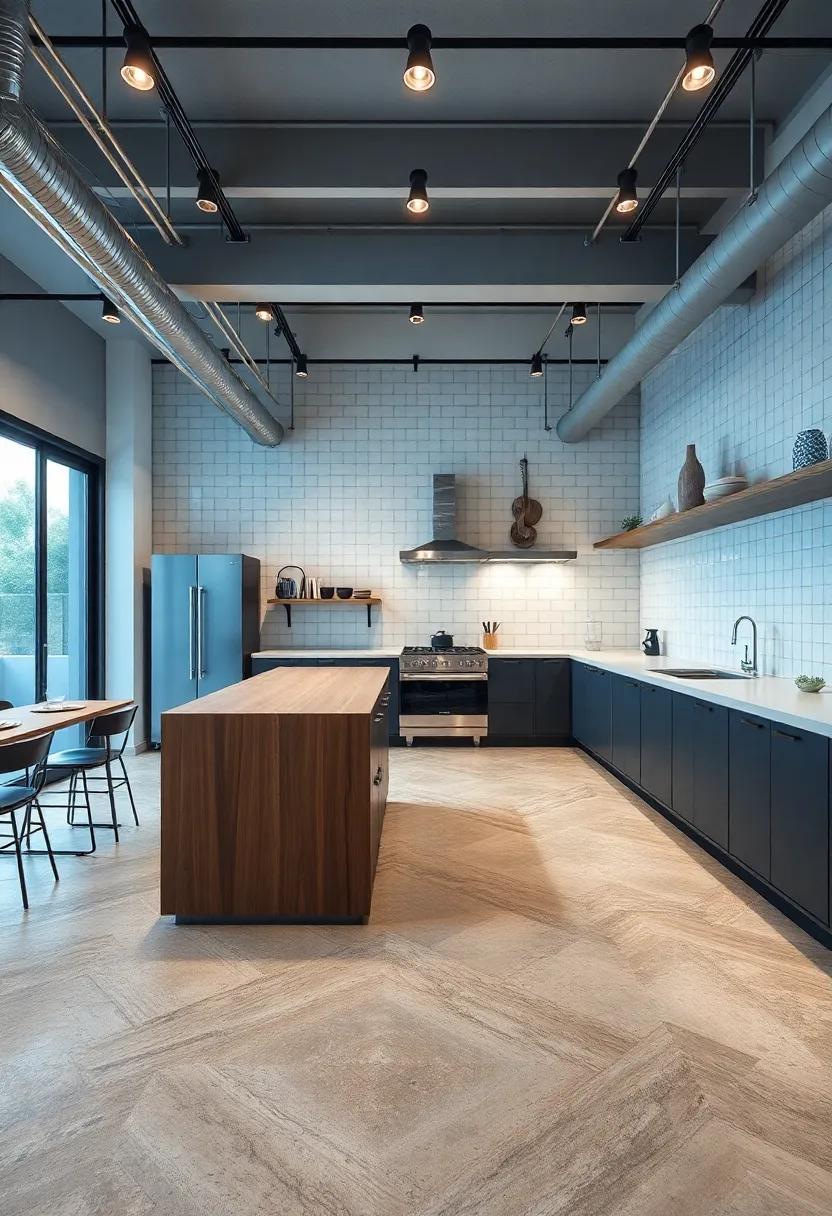
Choosing the right flooring for both outdoor and indoor kitchens requires a careful balance of aesthetics, safety, and longevity. Outdoor kitchen flooring must withstand the harsh effects of weather while offering a visually appealing surface for entertaining and cooking. considerations such as slip resistance, UV resistance, and the ability to endure temperature fluctuations are crucial. Some popular options include ceramic tiles, composite decking, and natural stone, each providing unique benefits. Ensure that chosen materials not only complement the overall design but also promote a safe cooking environment by reducing the risk of slips or falls.
For indoor kitchen flooring, durability is paramount to withstand the daily wear and tear from spills, heavy foot traffic or dropped utensils. Vinyl, laminate, and sealed concrete are excellent choices, offering resilience along with easy maintenance. Additionally, it’s important to keep in mind the ease of cleaning and whether the material can resist stains or odors. A well-thought-out combination of style and function ensures the flooring enhances the kitchen’s overall ambience without compromising safety. Here is a quick comparison table to illustrate some key attributes of popular flooring options:
| Flooring Type | Durability | Slip Resistance | Maintenance |
|---|---|---|---|
| Ceramic Tile | High | Moderate | Easy |
| Natural Stone | Very High | Low | Moderate |
| Vinyl | Medium | High | Very easy |
| Laminate | Medium | Moderate | Easy |
| Concrete | Very High | Varies | Moderate |
Closing Remarks
As we draw the final curtain on the intricate world of industrial kitchen flooring, it becomes clear that the right choice extends beyond mere aesthetics. It’s about harmonizing durability with safety and seamlessly integrating style into functionality. In an environment where spills, heat, and heavy foot traffic are part of daily life, investing in the right flooring can transform not just the kitchen’s appearance, but also its efficiency and safety.
Remember,every material tells a story,every finish exudes a vibe,and every slip-resistant surface can save you from disaster.So, as you embark on your flooring journey, consider your unique needs, the demands of your kitchen space, and the ambiance you wish to create. You’ve read, researched, and reflected—now it’s time to make an informed decision that will support your culinary ambitions for years to come.the perfect flooring choice is one that balances practicality with personality,creating a space where creativity can flourish alongside culinary excellence. Happy flooring!

